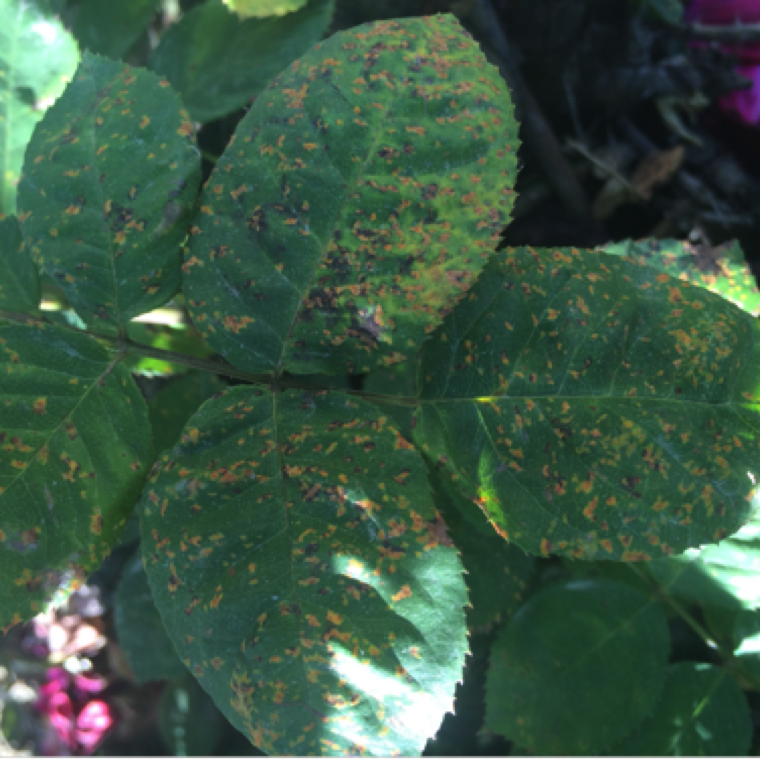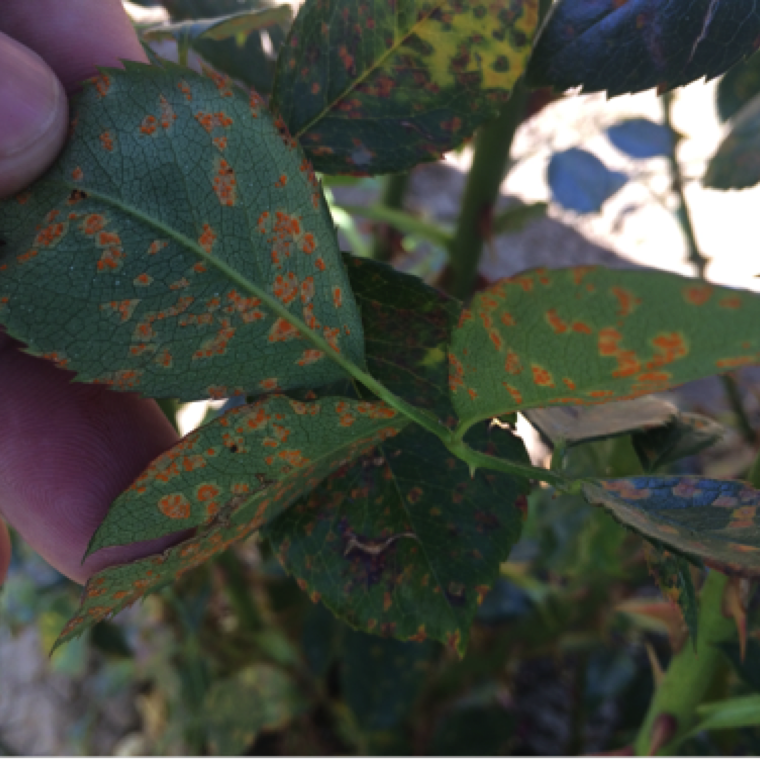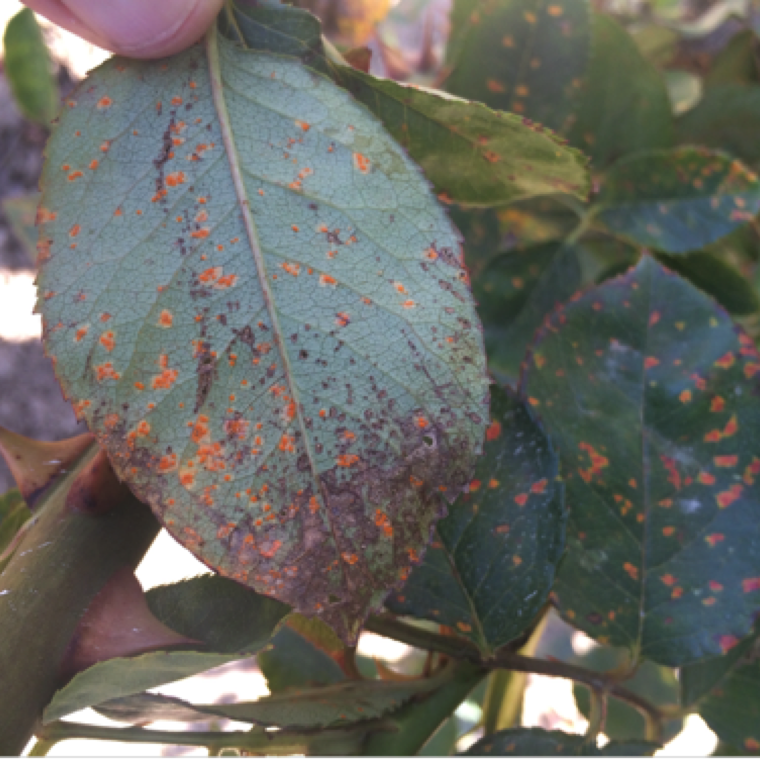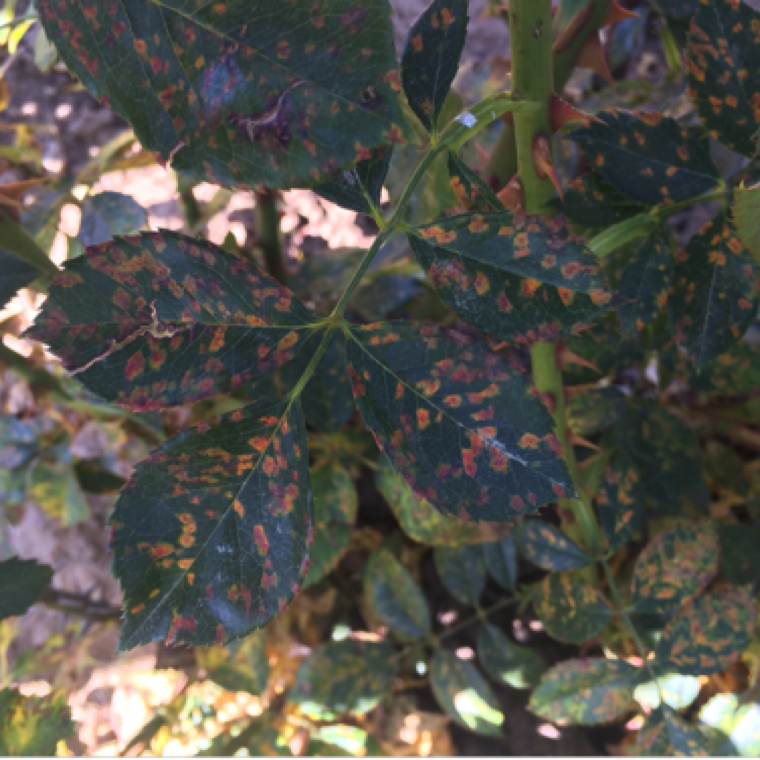


Rust disease first shows as yellowing of lower leaves and mostly commonly seen in mild temperature conditions. The disease can also distort the stem.

Orange and black spots can be observed on both upper and lower side of the leaves. The disease is only rarely seen in Florida. The pathogen favors milld temperatures and wet conditions.
RUST
Fungal causal agent: Phragmidium spp.
Rose diseases

